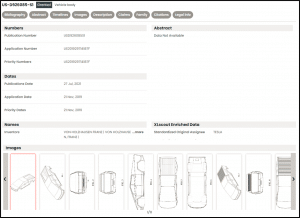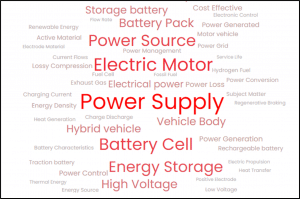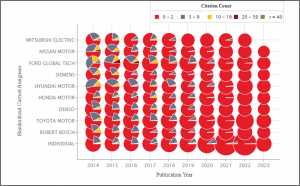
In 2022, 7.8 million electric vehicles (EVs) were sold globally, representing a 68% increase over 2021. This increase aided electric vehicles in capturing roughly 10% of the global auto market share. While this may appear to be a small number, we are well ahead of schedule according to the International Energy Agency, which predicted that EVs would not reach 7%–12% of global auto sales until 2030. As electric vehicles take the world by storm, we are witnessing increased innovation in this sector. In this article, we’ll look at four electric vehicle trends that R&D professionals should be aware of.
What are Electric Vehicles (EVs)?
Electric vehicles (EVs) are automobiles that run on electricity stored in batteries or other devices that store energy. Instead of an engine with internal combustion that burns fossil fuels like gasoline or diesel, they use electric motor(s) to propel the vehicle.
They’re frequently marketed as a greener and more sustainable alternative to conventional gasoline-powered vehicles because they emit little to no emissions while in operation. They are also more energy-efficient than traditional vehicles, requiring less energy to travel the same distance.
Governments around the world are enacting regulations to encourage EV adoption for a variety of reasons, including:
- Reducing transportation-related greenhouse gas emissions and the effects of climate change
- Reducing reliance on foreign oil
- Increasing global energy security
With this shift away from combustion engines, even luxury automakers are turning to EV technology. Bentley, for example, has stated that production of its 12-cylinder engine will cease in April of next year.
Concerns and Misconceptions Around Electric Vehicles
Despite an expanding market presence, there are a few misconceptions about EV functionality and operations. Here are a couple of examples:
- EVs don’t have enough range: Many people believe that electric vehicles (EVs) do not have enough range to be feasible for everyday use. Most modern EVs, however, can travel more than 100 miles on a single battery charge, and some can travel well over 300 miles.
- EVs are expensive: While some high-end models can be expensive, there are numerous affordably priced EVs on the market today. Furthermore, the overall ownership cost for an EV is often lower than that of a gas-powered car because EVs require less maintenance and have lower fuel costs.
- EVs are not as environmentally friendly as many people believe: Some critics argue that EVs aren’t as environmentally friendly as they’re made out to be. EVs, on the other hand, produce considerably fewer emissions over their entire lifespan than gasoline-powered cars, even when battery production is considered.
- There aren’t enough charging stations: Some people are concerned that there aren’t sufficient charging stations to facilitate widespread EV adoption. While charging infrastructure is still in its early stages, there are thousands of charging stations throughout North America and Europe, and many organizations and governments are making investments in further expansion.
These misconceptions are gradually dispelling themselves as more people adopt EVs and realize their numerous benefits. Furthermore, innovation is ongoing and addressing many of these major concerns, with the goal of making EV technology even more approachable and efficient than it is now. These advancements make EVs more convenient, practical, and appealing to consumers, thereby quickening the shift to a more sustainable transportation system.
Top Electric Vehicle Trends
Electric Vehicle Trend #1: Vehicle Design
Recent advances in EV design have emphasised the development of more aerodynamic, efficient, lightweight electric vehicles. To reduce EV weight, improve efficiency, and increase range, one effective approach is to use lighter materials such as aluminium, carbon fibre, and composites.
Companies are also investigating streamlined designs to reduce air resistance and improve aerodynamics, which will result in increased range and energy efficiency.

Tesla’s new Cybertruck design is a good example of this, with a drag coefficient of 0.39 Cd, compared to 0.55 to 0.65 Cd for standard pickup trucks. Elon Musk believes that with some advancements, Tesla could reduce the Cybertruck’s Cd to 0.30.
Another trend is the development of EVs with smaller batteries that can be quickly swapped out at charging stations, enabling longer journeys without having to wait for a full recharge. All of these innovations and design strategies aim to make EVs more accessible and practical for everyday use, with longer ranges, faster charging times, and improved energy efficiency.
Electric Vehicle Trend #2: Battery Technology
The majority of EVs today are powered by lithium-ion batteries, a decades-old technology also found in laptop computers and cell phones. Prices have come down and performance has improved after many years of development, but there is still room for improvement through new technologies.
The most common technical issues with electric batteries are listed below. Among the key issues addressed are power supply, power conversion, power generation, battery cell, and others.

The use of solid-state batteries, which use solid electrolytes rather than liquid electrolytes, is one of the most promising developments in EV battery technology. This improves energy density, safety, and charging times. As shown below, automotive companies account for 50% of the top filers of patents associated with solid-state batteries.

Researchers are investigating high-nickel cathodes as a means of extending the range of electric vehicles, and they have found that silicon anodes can store more energy than conventional graphite anodes. Furthermore, there is a lot of innovation in manufacturing, with companies building huge “gigafactories” to boost battery manufacturing capacity and working to develop modular battery systems that can be easily and quickly incorporated into a range of different electric vehicles.
Furthermore, EVs are becoming more powerful and faster as a result of recent advances in motor and battery technology. For example, the Rimac Nevera, an electric supercar, can accelerate from 0 to 60 mph in 1.85 seconds, making it among the world’s fastest cars.
Electric Vehicle Trend #3: Sustainability
With global climate concerns and consumers shifting toward more sustainable alternatives, many manufacturers are investigating sustainability. To minimize the environmental impact of manufacturing, examples involve employing recycled and eco-friendly materials for automotive parts, such as recyclable plastic and natural fibers.
Companies are also investing in research to enhance the sustainability of battery production, such as attempts to minimize the use of rare and environmentally hazardous materials.
Recycling and repurposing EV batteries is becoming more popular in order to recover useful materials and reduce waste. Patents for battery recycling have increased in recent years. Several companies are working on new innovations to recover up to 95% of the materials in EV batteries, attempting to make them more environmentally friendly and sustainable.
Electric Vehicle Trend #4: Charging Infrastructures
With increased demand for EVs comes a greater need for sustainable charging options. And, as shown in the graph below, patent trends reflect this need.

The emergence of ultra-fast charging is one of the most notable developments in EV technology. This method enables charging of EVs up to 80% capacity within a matter of minutes. Several companies, including Tesla, Electrify America, and Ionity, are heavily investing in the construction of charging stations across major highways and urban areas.
Another trend is the incorporation of charging infrastructure into common places such as workplaces, parking lots, and retail areas. This makes charging electric vehicles more convenient for owners. Additionally, efforts are being made to expand the charging network by forming alliances between automobile manufacturers and charging providers, making investments in new technology to minimize charging times, and boosting the availability of government incentives aimed to promote the adoption of EVs.
Overall, these advances in EV charging are contributing to the development of a more accessible and reliable charging network for EV owners.
Closing Thoughts
Finally, EV innovation is rapid, and as the world’s reliance on fossil fuels decreases, EVs will become increasingly important. Emerging trends such as faster charging, longer-range batteries, and solid-state batteries will shape transportation’s future, affecting the economy, environment, and society.

